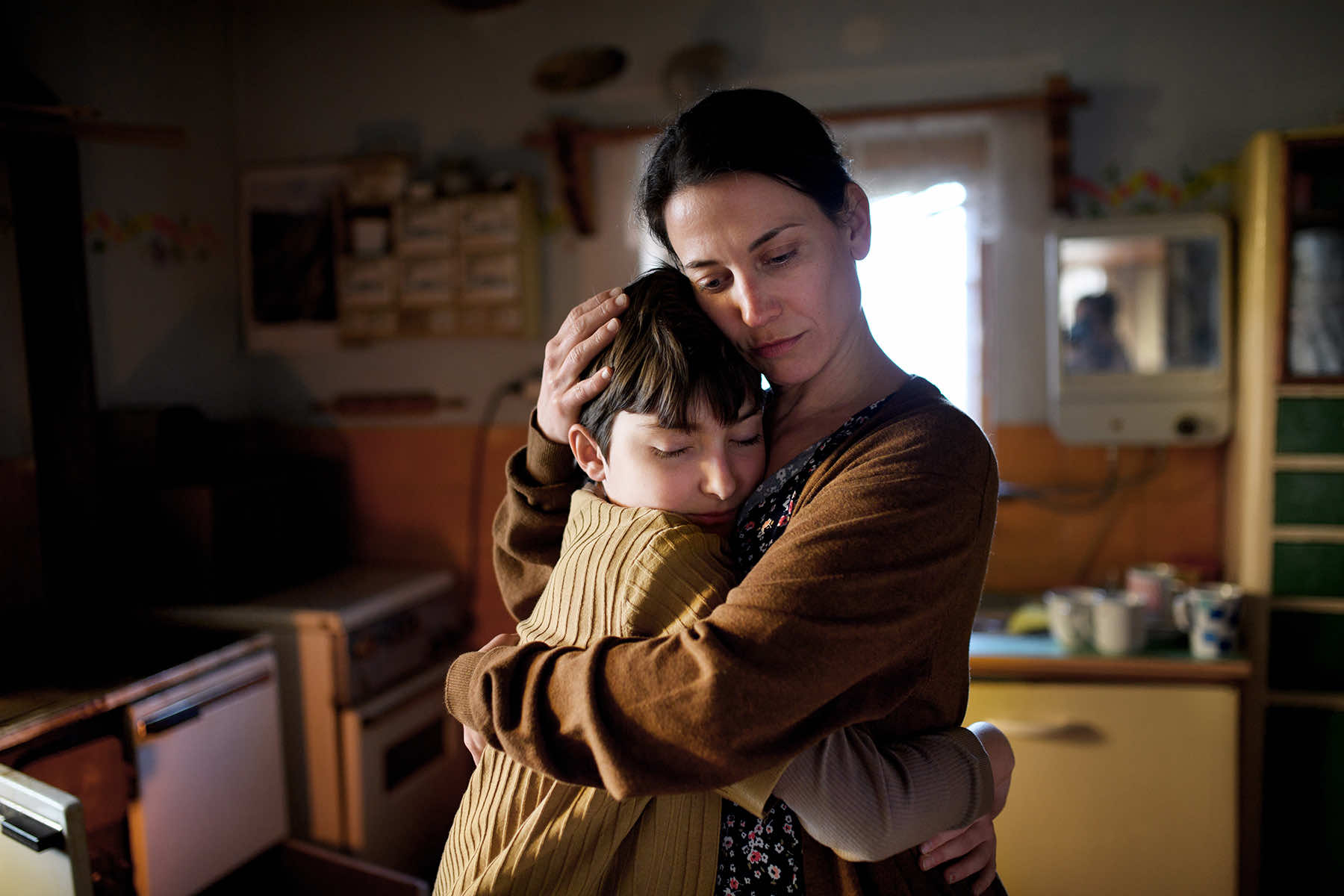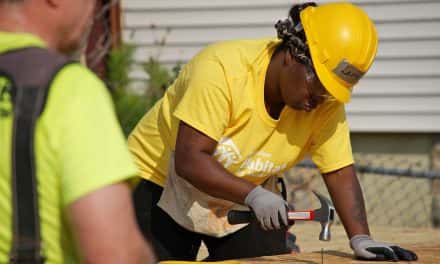
“The dignity of the individual will flourish when the decisions concerning his life are in his own hands, when he has the assurance that his income is stable and certain, and when he knows that he has the means to seek self-improvement.” – Dr. Martin Luther King Jr.
Economic circumstances do not determine one’s ability to be a nurturing parent; poverty, though, can overload caregivers and families with stress and create conditions by which neglect is more likely to occur and be observed and reported. The stressors of poverty are complex and represent a constellation of challenges, from housing insecurity and economic shocks like the loss of a job or an unexpected medical bill, to lack of access to child care and healthy food, and navigating the “benefits cliff.”
Poverty puts families in situations where decisions have to be made between keeping the lights on and buying a winter coat, or seeing a doctor and putting food on the table. These impossible decisions make families who are living in poverty even more visible to mandated reporters and the child welfare system.
THE INTERSECTION OF POVERTY AND NEGLECT
While Wisconsin law states that family separation due to neglect should only happen for reasons other than poverty, economic instability is common among families with children entering the foster care system. Nearly 85% of families investigated by Child Protective Services (CPS) in the U.S. earn below 200% of the federal poverty line, or $49,720 for a family of 3 in 2023.
Children in economically insecure families are five times more likely to experience maltreatment and seven times more likely to experience neglect compared to other children. Families living below the poverty line are three times more likely to be substantiated for child maltreatment and be separated.
Another way to look at the role of poverty in child neglect is the absence of children from wealthy families in child welfare. As Jermaine Reed, a Milwaukee child welfare professional, shared with me recently in our podcast, Overloaded: Understanding Neglect, wealthy families also experience substance abuse, domestic violence, mental illness, and other challenges that contribute to child neglect; however, they rarely enter the foster care system because they have ample resources to access services and support.
Considering the disproportionate rates of Black, Native American, and poor families in our child welfare investigations and separations, we must ask ourselves if the system is designed to support or police historically marginalized communities.
THE IMPACTS OF POVERTY ON PARENTING
Poverty can lead to chronic stress, which negatively impacts parenting and parents’ interactions with their children. High levels of stress caused by poverty can result in parents becoming more irritable, less patient, and exacerbate mental health and substance use challenges. Parents experiencing financial strain may have limited time and resources to focus on their children’s needs, affecting the quality of their responsiveness to their children’s needs, their ability to set healthy boundaries, and constructive discipline methods.
With this knowledge, it should not be surprising that the provision of economic and concrete support is associated with decreases in both neglect and physical abuse. In 2023, Chapin Hall at the University of Chicago, one of our country’s leading research and policy centers that focuses on child welfare and family well-being, published a comprehensive report on the impacts of poverty on child neglect and abuse.
Their message was clear: “Income supports to families with low incomes, like those provided through the Temporary Assistance for Needy Families (or TANF) program, reduce the risk for child maltreatment and the child welfare system involvement that results from it.”
Most recently, we witnessed this finding during the pandemic when the Child Tax Credit was expanded, which resulted in pulling millions of children out of poverty and consequently reducing the number of reports of child neglect and abuse.
THE WAR ON POVERTY AND THE POOR PEOPLE’S CAMPAIGN
In January, we marked the 60th anniversary of President Lyndon Johnson’s War on Poverty. In his State of the Union remarks, he called poverty “a national disgrace” and “a societal failure”. He stated, “The cause may lie deeper in our failure to give our fellow citizens a fair chance to develop their own capacities, in a lack of education and training, in a lack of medical care and housing, in a lack of decent communities in which to live and bring up their children.”
President Johnson signed into law the Economic Opportunity Act later that year, which would create job training programs, Head Start early childhood education, and a domestic volunteer program – now known as Americorps. It would also attempt to combat racial discrimination, which had marginalized people of color from fair participation in our politics and economy. The War on Poverty would later inspire or expand income, food and healthcare assistance, and tax credits such as TANF, Medicaid, and the Earned Income and Child Tax Credits that have shown to reduce poverty.
We also celebrated Dr. Martin Luther King Jr’s birthday in January. Dr. King’s legacy of fighting for economic justice is often forgotten or ignored, but he centered policy proposals such as a Guaranteed Income for all in his “Poor People’s Campaign” during the last years of his life.
In 1967, Dr. King wrote in his book Where Do We Go From Here: Chaos or Community?, “In addition to the absence of coordination and sufficiency, the programs of the past all have another common failing – they are indirect. Each seeks to solve poverty by first solving something else. I am now convinced that the simplest approach will prove to be the most effective – the solution to poverty is to abolish it directly by a now widely discussed measure: the guaranteed income.”
A Guaranteed Income is a direct cash payment with no strings attached, and has shown to reduce poverty and food insecurity, improve long-term, full employment and the health of participating individuals.
Policies that strengthen family economic stability can go a long way toward reducing childhood adversity and supporting the relationships that help children thrive.
While progress has been made in Johnson’s War on Poverty and in Dr. King’s Guaranteed Income proposal, there are still many battles before us as child and family poverty have not been eradicated. In the complexity of these battles, we often solve one problem only to expose or create another in this infinite war. For example, with our economic safety net, many families find themselves on the benefits cliff as they make too much to be eligible for housing vouchers or cash assistance, but too little to pay for what they need for their families as the cost of living has increased at a greater rate than the supportive programs.
CURRENT STATE OF POVERTY IN MILWAUKEE AND ACROSS THE STATE
In 2022, nearly 74,000 reports were made to Child Protective Services in Wisconsin. To make sense of that, over 200 children are being reported every day because someone believes they are being abused or neglected. Of those 200 reports each day, Milwaukee makes up nearly 40 of them, or 1 child reported for every 4 schools in our Milwaukee Public Schools system.
During that same time period, 1 out of 10 Wisconsinites was living in poverty compared to nearly 1 out of 4 Milwaukee residents. Milwaukee residents’ median household income was $49,733, almost exactly 200% of the federal poverty line for a family of three.
Now consider that the costs of housing, food, and childcare, our most basic needs to ensure the safety and well-being of our children, have increased, dramatically in some cases, over the decades while wages, especially for low-paying jobs, have not. In Milwaukee County, a family with two young children faces an annual bill of over $25,000 a year for childcare unless they qualify for the Wisconsin Shares Child Care Subsidy because they make less than $54,000 annually. Even with the subsidy, they would pay $395 a month or nearly 9% of their income.
The economic stress on our Milwaukee families that are living in poverty can snowball from a missed childcare payment to a missed day of work because they stayed home with their child to the loss of that job and their home. As these conditions worsen, the likelihood of child welfare involvement and family separation increases.
In a recent episode of our podcast, I had a conversation with a Milwaukee mother named Jessika. She shared an experience where she was homeless and living in her car while she was working for a local workforce development company that supports people in finding employment while on public benefits like W-2. We discussed the real challenges that individuals face with the benefits cliff. In her case, she made too much money to receive a job access loan, yet did not have enough money to afford rent.
Too many parents in Milwaukee find themselves in these confounding, often life-altering situations where economic growth through a raise, for example, can result in the loss of family-supporting assistance like child care, food, and healthcare subsidies.
PATHWAYS TO IMPROVING ECONOMIC STABILITY TO REDUCE FAMILY SEPARATION
If our communities are to improve family well-being and reduce the risk of neglect and family separation, it will be critical to address the root causes of poverty-induced stress and support family economic stability. There must be an increase in access to resources such as affordable housing, healthcare, and education, as well as policies and practices that reduce income inequality. We, as a society, must promote systems change that seeks to prevent and divert from child welfare involvement while investing more in our primary prevention and community support services.
Systems change demands that we confront the history and intentions of our policies. For example, the move from Aid to Families with Dependent Children to TANF came out of the same Congress as the Crime Bill of 1994 and the Adoption Safe Families Act (ASFA).
The Crime Bill led to mass incarceration, disproportionally impacting Black men and leaving Black families especially vulnerable. ASFA was a response to the huge influx of children into foster care as a result of the War on Drugs, particularly focused on the “crack epidemic”. ASFA, which has been child welfare’s north star for over 20 years, intended to reduce the child welfare population by getting children ‘languishing’ in foster care to exit more quickly, often through adoption. Preventing family separation was not a goal or metric used to determine the success of a child welfare program.
As a response to a “drug epidemic,” timelines developed for moving children towards adoption were not rooted in evidence or best practices related to substance abuse treatment, but rather congressional bartering. Consequently, generations of Black families have been separated irreparably due to a series of federal policies.
TANF is rooted in a similar ideological philosophy, one rooted in accountability as opposed to prevention. TANF is not an anti-poverty program, but rather one targeted at reducing the number of people receiving benefits and “ending welfare as we know it’ as President Clinton so famously promised.
Meaningful systems change will require that our society address the harms of these policies while changing their intentions. If TANF prioritized ending poverty and family separation over simply providing temporary assistance that leads to mostly low-paying jobs, then it might begin to achieve and build upon its first purpose that reads: “Provide assistance to needy families so that children can be cared for in their own homes or in the homes of relatives.”
However, as I have learned from my research and conversations with Jessika recently, it is not enough to provide temporary assistance to families if the cost of child care, housing, and healthcare continues to rise. There must be downward pressure on those rising costs while applying upward pressure on policies such as the Child Tax Credit, Dr. King’s Guaranteed Income, and safe, affordable housing and child care.
Through these approaches, overloaded families may finally shed the chronic stress of snowballing economic pressures that put their families’ well-being at risk. Parents can then focus on what is most important to them and their children because we know that children thrive when they have regular interactions with their parents, especially when their parents are not overloaded by stress.
Overloaded: Understanding Neglect is a Milwaukee-based podcast series that aspires to build a shared understanding of neglect, its underlying root causes, and how they overload families with stress.
Luke Waldo
Ground Picture (via Shutterstock)
Overloaded: Understanding Neglect is a Milwaukee-based podcast series that aspires to build a shared understanding of neglect, its underlying root causes, and how they overload families with stress.















